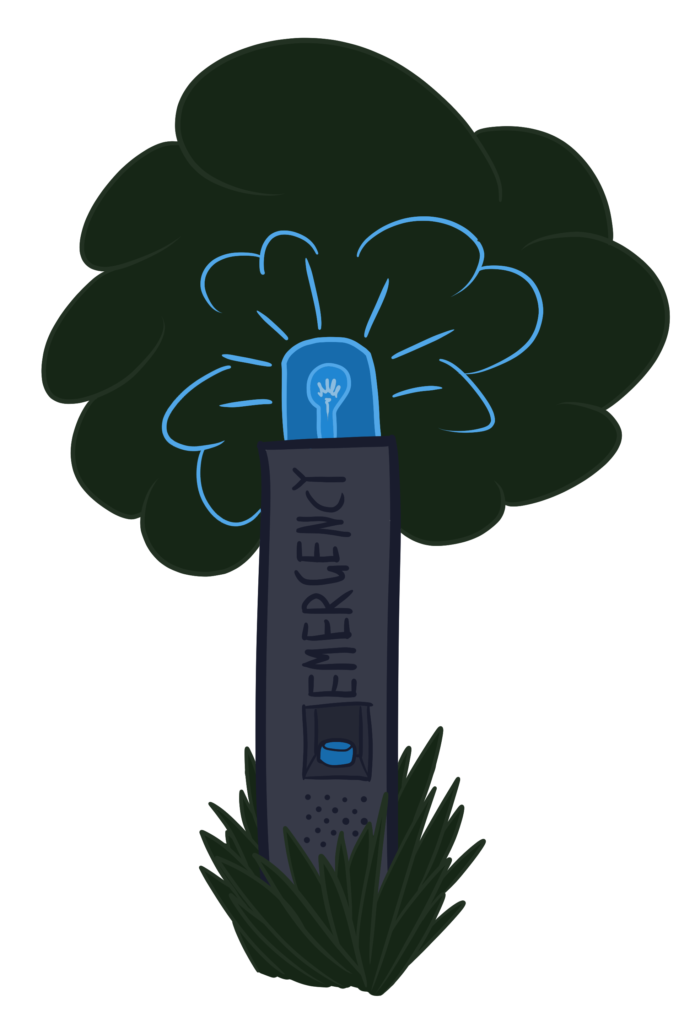
At first glance, the Lewis & Clark campus is as safe as any other institution. The campus is constantly patrolled by Campus Safety trucks and there is a strong emphasis on reporting Title IX violations, all geared toward protecting the student body.
That being said, when emergencies occur, questions arise about the school’s capacity to respond constructively. A recent incident in my dorm late in the night highlighted this issue. A student was dangerously intoxicated, requiring immediate medical attention, which her friends were hesitant to seek out.
They believed that contacting Campus Safety or emergency services would get them in trouble. Other students phoned the Resident Advisor (RA) on call, but nobody answered.
While Campus Safety was eventually called and the student received the necessary assistance, the initial failure to reach an RA raises an important question: Is the school prepared to support students in immediate need of help?
The on-campus dorms, although convenient to freshmen and sophomore students, raise security issues. Key cards often grant a student access to all of the buildings in their residence area, rather than just the one they reside in.
For example, a student whose dorm is in the Forest Residence Hall complex has access to all Forest halls, creating a loophole that increases the risk of unauthorized entry and potential harm to residents.
Another risk posed to those living on campus is the blue light system. The black towers with blue lights stationed around campus each feature a button that, if pressed, will alert Campus Safety officers.
These towers rely on high visibility so that students can reach them if needed. However, our hilly, forested campus can make it difficult to locate one of these towers in the case of an emergency.
This crucial design flaw places students at risk of not being able to contact Campus Safety in the event of an emergency.
Across campus, other safety concerns persist. So far in the year, the administration has made little mention of last year’s tragic accident.
I value the efforts administration have made to address the structural safety concerns on campus. Although, a question is raised of how educated students are about safety practices.
Efforts to address structural safety on campus, what could be used as an opportunity to educate students about safe practices instead is mostly forgotten.
The numerous trails found on campus and in the surrounding area, while picturesque, remain largely unmonitored by Campus Safety.
Recently, I ventured into the ravine on one such trail that was virtually out of sight from the main campus. It was clear that other students had been there before, as indicated by the cigarette butts and half-smoked blunts littering the trampled area.
But as I hiked down, the trail deteriorated into a steep, muddy decline.
I couldn’t help but think about what would happen if I fell or if one of the branches of the trees came crashing down upon me. Would anyone be able to hear me call for help?
Many students flock to LC for its stunning campus. The opportunity to walk through a forest on the way to class is undeniably appealing.
However, the safety risks inherent to the realities of living on campus and the scenery that envelops this school must be acknowledged.
The school should establish foundational dialogues between students and Campus Safety to build trust and address student concerns about living here.
We deserve informed, non-threatening policing that prioritizes student safety.
Subscribe to the Mossy Log Newsletter
Stay up to date with the goings-on at Lewis & Clark! Get the top stories or your favorite section delivered to your inbox whenever we release a new issue.

A couple semesters ago, one of the students in one of my classes became unresponsive and fell out of their chair. We tried calling Campus Safety, but their phone was down, so we had to send a student to run to their building. I will give them credit for arriving quickly once notified, but the phone should not have been down in the first place. If the situation had ended differently, the student could have died.